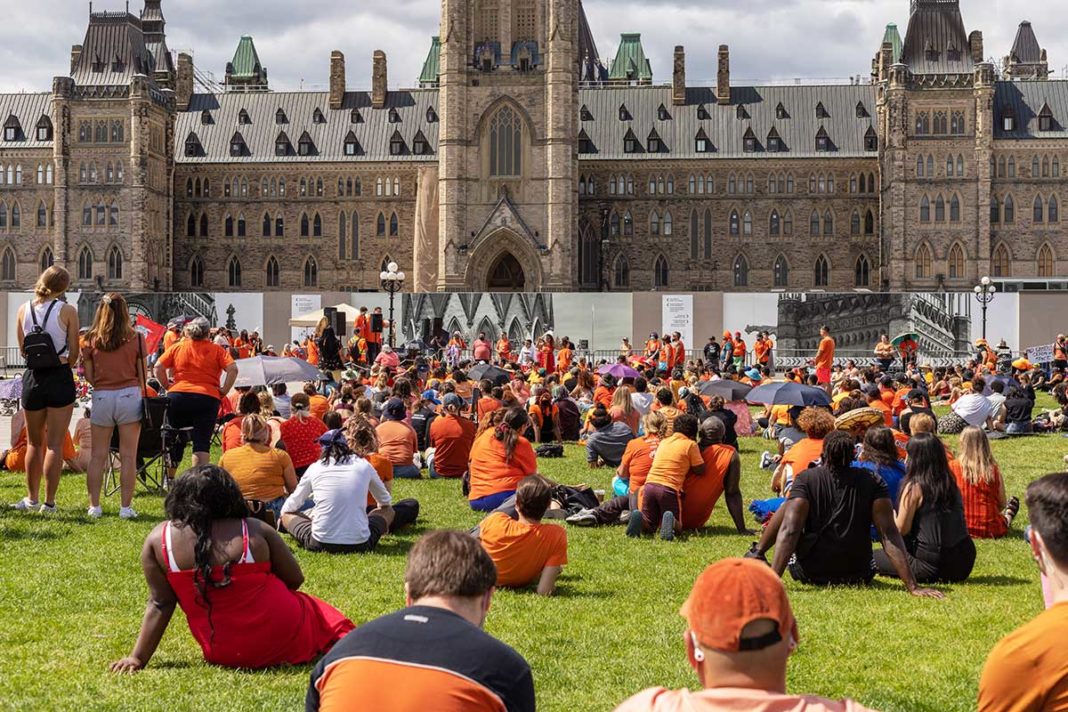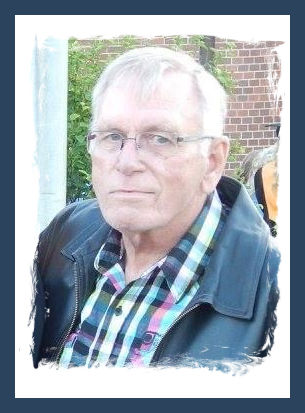MANITOULIN – September 30, 2021 marks the first National Day for Truth and Reconciliation. It is a day to acknowledge and consider the trauma and ongoing impacts of residential schools and their effects on families and communities as part of the reconciliation process, but what does reconciliation mean?
“September 30 is all about recognizing our past history and then asking, ‘where do we go from here?’” said Jeannette Corbiere Lavell of Manitowaning. “Because no matter what, we are still occupying this land, this space as Indigenous and non-Indigenous people. I would think the first step is to look at the truth, because truth and reconciliation go together.”
Born in Wiikwemkoong, Ms. Corbiere Lavell has been an educator and a lifelong advocate for the rights of Indigenous women. She has sat on many committees and boards, was a founding member of the Ontario Native Women’s Association, has received many honourary degrees and in 2020, was an Indspire Lifetime Achievement Award recipient.
“What I want to stress is that we need to know the facts, need to know what happened in the early stages of our contact, to know what was behind legislation like the Indian Act and we need to know about residential schools,” she said. She’s glad the unmarked graves have been exposed, “because people wouldn’t believe it if the physical evidence wasn’t there.”
It’s a good place to start, with the culture of assimilation and genocide, Ms. Corbiere Lavell said. “If we recognize that then we can move forward. How do we do this? It will be up to us as Indigenous people and the rest of Canada to start working together to bring about reconciliation, to share and treat each other with respect. We should be able to do this in this day and age, if we put our hearts and minds to it and our energy into it.”
Dr. Deborah McGregor, from Whitefish River First Nation, is associate professor and Canada Research Chair in Indigenous Environmental Justice at York University’s Osgoode Hall. She respects the view of reconciliation put forward in 2015 by Justice Sinclair in the Truth and Reconciliation Commission (TRC) report because it was the view shared with the commissioner from actual residential school survivors. Justice Sinclair viewed reconciliation as “establishing and maintaining a mutually respectful relationship between aboriginal and non-aboriginal peoples in this country.”
One part within the TRC interests Dr. McGregor quite a bit in the work she does. An advisory committee made up of elders and traditional knowledge keepers put forward the view that, “not only do we have to reconcile our relationships between Indigenous and non-Indigenous peoples, but we also have to reconcile our relationship with the natural world,” she explained. “They said if that doesn’t happen, you’re not going to achieve reconciliation between peoples.”
“Almost every conflict between Indigenous and non-Indigenous people is over land,” she said. “I guess you could say nature. That’s something I focus on a lot in the work that I do, on what that means in terms of how people are supposed to do that.”
Climate justice for everybody is really relevant right now with the climate emergency, particularly in First Nations, added Dr. McGregor. “When you think about the fires in Northwestern Ontario, First Nations are the ones evacuated from their communities.” They were evacuated far away in southeastern Ontario, to wherever they could be accommodated. “That’s really important for people to be able to do and they can take their guidance from some of the 10 principles that were laid out in TRC’s principles document. That can help us get there, by paying attention to Indigenous peoples’ knowledge, to their legal systems, to their protocols, respecting treaties, honouring those kind of agreements and respecting people’s knowledge. Those are things that were undermined in residential schools and paying attention might help us achieve reconciliation among peoples but also with the natural world.”
Dr. McGregor teaches a course in which students learn about residential schools, the United Nations Declaration on the Rights of Indigenous Peoples and the history of colonization. “They have to learn that this is ongoing. None of this is history. It’s still here. It hasn’t gone away. There is historical and ongoing colonialism. To me, part of reconciliation means to decolonize that.”
Decolonization to her means there is actually justice achieved for Indigenous peoples. That means people should support land claims or litigation against the state for wrongs that were done. “Those are legitimate claims and Indigenous people shouldn’t always have to be proving that wrong was done when very clearly, there was.”
There’s a lot of different resources being written that are intended to support public education as well, she said. “There really needs to be a big public education push so people can learn and then act in positive and constructive ways. There are whole generations of people who don’t know anything about this. It’s going to take a long time to achieve a balance.”
She hopes National Truth and Reconciliation Day offers a counternarrative to Canada Day, when there was a lot of reaction because it was right after children’s remains were found on the site of a former residential school. “It’s important to go just a little bit broader than the TRC for the day because there are other horrible things happening to children in the child welfare system, with human trafficking and other things. Reconciliation is a pretty broad concept.”
“The other thing that I would say is that people still have to be prepared to hear the truth. People came forward and shared their stories, which was incredibly brave of them,” Dr. McGregor said. “No doubt it was traumatizing for a number of them to talk about some of the things that happened or to speak for people who are not here with us anymore. There’s still a lot more truth to come out. People still have to be open to the fact that there’s a lot that we don’t know and over time it’s going to come out. The story’s not done yet.”
The Northern Ontario School of Medicine (NOSM)’s Director of Indian Affairs, Yolanda Wankamik, a member of Whitesand First Nation, said the TRC report is one of several dating back to the Royal Commission that “lead and guide community-based solutions to what reconciliation in healthcare looks like.” NOSM is one of 17 medical schools in Canada and has the responsibility of training future doctors that are going to live, work and play in Northern Ontario, so meaningful reconciliation actions will have a far-reaching impact.
“It’s been Indigenous folks who have been part of these reports and committees for the past 25 years and they are saying these are some of the things that need to be dealt with,” Ms. Wankamik said. At NOSM that amounts to system change, community partnerships, Indigenous leadership, staff, students and healthcare providers, being anti-racist, providing culturally safe education and training, and improvements in Indigenous peoples’ health outcomes. NOSM’s goal is training physicians, both Indigenous and non-Indigenous, to understand the context of improving Indigenous health outcomes in Northern Ontario, she said.
System change means doing things differently. “Indigenous leaders need to be the leaders in that change, so taking some of the reports that have been written by Indigenous communities and groups and moving that language and that action into your own places and spaces of strategic plans and curriculum planning is very important,” she said. At NOSM, that means board endorsement of a commitment to equity, diversion and inclusion by approving three guiding principles that the school will live by. They also appointed an associate dean of equity and inclusion in 2020, the first ever for NOSM.
For community partnerships, conversations begin with the communities NOSM works with and in, and sees those communities leading the project. Fifteen years ago, NOSM created an integrated community placement that now has 42 community partners. First year students are placed in an Indigenous community (or with a Metis organization or an Indigenous healthcare organization in Northern Ontario) for four weeks. “It’s quite unique,” said Ms. Wankamik. “It’s the only placement of its kind in Canada. Learners are immersed in a community experience where they live, work and play alongside elders, knowledge carriers and the health support offices in each of the communities to have a better understanding of the community they are seeking to potentially live and work in upon graduation.”
“When you’re hospitalized as an Indigenous person you’re catapulted into an institution where everything is very foreign. Many of our community members don’t want to come from the north into hospital type situations,” Ms. Wankamik said. She pointed to Meno Ya Win Health Centre in Sioux Lookout as an example of reconciliation in healthcare. The hospital has a traditional foods program supported by legislation that enables them to offer traditional foods, as well as cultural and spiritual programs. “True reconciliation is systematically embedded in the system to support improving health outcomes,” she said.
Moving ahead, reconciliation is about those actionable items and what can Indigenous and non-Indigenous leaders do. “I would argue the non-Indigenous folks would have a bigger job than Indigenous folks because we already know what we want to see happen. We’ve written about it for years,” said Ms. Wankamik.





